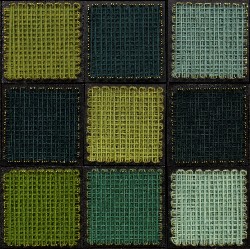Book Review: Joy Boutrup and Catharine Ellis The Art and Science of Natural Dyes
Reviewed by Pamela Feldman
As natural dyers, we are always looking for new information about our craft. My library consists of many books on the subject, from its history to specific techniques. Joy Boutrup's and Catharine Ellis's new book The Art and Science of Natural Dyes is a good addition to the collection.
 |
This book covers all areas of natural dyeing, including fiber information, mordanting, basic dyeing, indigo and printing. Each section has an explanation of the technique with recipes following. For instance, the Red Dyes section covers madder, cochineal, and lac, explaining how to extract the dyes, their chemical group, percentage of dye needed, dyeing techniques and how they react with protein and cellulose fibers. This clearly written information gives the dyer enough information to choose the right dye and mordant for the type of fiber that they are dyeing.
One of the strongest parts of the book and most needed in dye literature is the fibers and textile section. It's really a must-read before diving into natural dyes. Here, in easy to understand terms, the science of natural dye is explained. It starts with an explanation of the difference between a dye and a pigment, terms I find are often misused. In the fibers section discussion and accompanying clear, well-illustrated diagrams explain the difference between protein fibers, such as wool and silk, and cellulose fibers such as cotton, linen and hemp and ramie, along with other manmade and natural fibers. It is here the dyer gains the knowledge on how to choose a fiber and understand how it takes the dye.
Joy and Catharine have done an excellent job writing this book, which fills a needed space in dye literature. I do think that a base knowledge of natural dyes would be helpful in utilizing the information in this book. Depending on your experience in the fiber field, a few hands-on workshops would be a good prerequisite.
This book is dedicated to Michel Garcia, the French chemist and dyer who many of in the dye world have come to know for his wealth of knowledge and generous spirit.
 Turkey Red Journal
Turkey Red Journal
